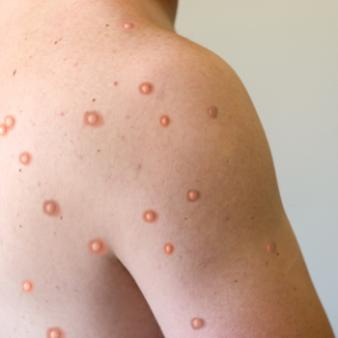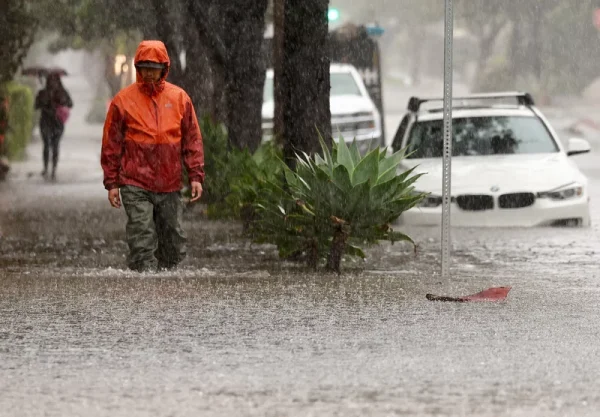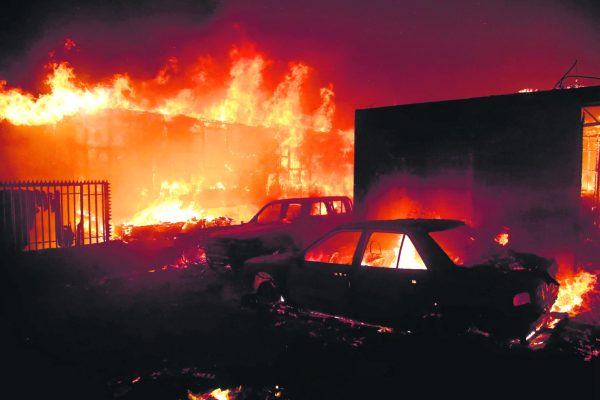Is There An Outbreak of Monkeypox?

Example of Monkey Pox
As the spread of the Corona virus decreased this year, a new disease came up and everyone is wondering what it is and how bad it can be. The new disease is called Monkeypox, an infection that started to pop up in the tropical rainforest regions of Central and West Africa. Recently, it has become a health hazard around the world, almost causing an epidemic.
According to the California Department of Public Health, the Monkeypox virus is less dangerous than the Coronavirus. To stay safe and out of harm’s way, you have to know what it is, where it came from, how it affects everyone and if there is a safe way around it.
Based on the following websites (Centers for Disease Control and Prevention, Johns Hopkins Bloomberg School of Public Health and Covid Strategies) all of them say the same thing. Monkeypox is a rare disease caused by infection with the Monkeypox virus. Monkeypox virus is part of the same family of viruses as the variola virus, the virus that causes smallpox.
Monkeypox was discovered in 1958 when two outbreaks of a pox-like disease occurred in colonies of monkeys kept for research. Despite being named “Monkeypox,” the source of the disease remains unknown. However African rodents and non-human primates (like monkeys)
might harbor the virus and infect people.
The first human case of Monkeypox was recorded in 1970. Before the 2022 outbreak, Monkeypox had been reported in people in several central and western African countries.
In 2017, there was evidence of this West African clade of Monkeypox spreading in Nigerian populations with differing epidemiology.
It’s been endemic for many years and there have been many cases of people with exposure to wild animals, particularly wild rodents. Sadly there have been more deaths and more cases in children under five.
In May, there were two large gatherings of gay men (a Pride event in the Canary Islands, and a festival in Antwerp, Belgium) Both were gatherings attended by men from across Europe and other countries and continents, and both had outbreaks of monkeypox. Since then, there has been a rapid spread.
The way that it can get transmitted from person to person is by close, personal, often skin-to-skin contact, Direct contact with Monkeypox rash, scabs, or body fluids from a person with monkeypox, Touching objects, fabrics (clothing, bedding, or towels), and surfaces that have been used by someone with Monkeypox, or any sexual activity or sexual items used by someone with Monkeypox.
It’s also possible for people to get monkeypox from infected animals, either by being scratched or bitten by the animal or by preparing or eating meat or using products from an infected animal.
Everyone can be affected by Monkeypox, mainly people who have been identified by public health officials as having contact with someone with Monkeypox, people who are aware that one of their sexual partners in the past 2 weeks has been diagnosed with monkeypox or people who had or have multiple sexual partners and people whose jobs may expose them to orthopoxviruses. Also, pregnant women can spread the virus to their fetuses through the placenta.
The symptoms of the Monkeypox virus are having a fever, Chills, Swollen lymph nodes, Exhaustion, Muscle aches and backache, Headache, Respiratory symptoms or developing a rash that’s located on or near the genitals or anus and could be on other areas like the hands, feet, chest, face, or mouth.
Monkeypox symptoms usually start within 3 weeks of exposure to the virus. If someone has flu-like symptoms, they will usually develop a rash 1-4 days later.
Monkeypox is dangerous in its way, depending on the person. Most people develop a painful rash that is characteristic of poxviruses. The red mark would become raised and fill up with pus over the next five to seven days. Children and people with underlying immune deficiencies may have more severe cases, but Monkeypox is rarely fatal.
The community has a lot of opinions about the virus, many think it’s nothing to worry about while others think it’s an emergency.
At the moment there are vaccines for people who caught Monkeypox, JYNNEOS and ACAM2000. It takes 14 days after getting the second dose of JYNNEOS for its immune protection to reach its maximum. The ACAM2000 vaccine may be an alternative to JYNNEOS. ACAM2000 is a single-dose vaccine, and it takes four weeks after vaccination for its immune protection to reach its maximum.
After getting the vaccine, it’s recommended that you reduce exposure to Monkeypox until immune protection from vaccines has reached its maximum.
Everyone who has been exposed to Monkeypox is at risk. If you can’t get vaccinated at the moment then the next best option is to stay far away from infected people or reduce sexual activites. Be aware that Monkeypox can also spread through respiratory secretions with close, face-to-face contact. Remember to wash your hands,and any fabrics.
And just like during the pandemic, wearing masks can prevent you from getting Monkeypox. It’s better to be safe than sorry when it comes to your health and staying safe.











